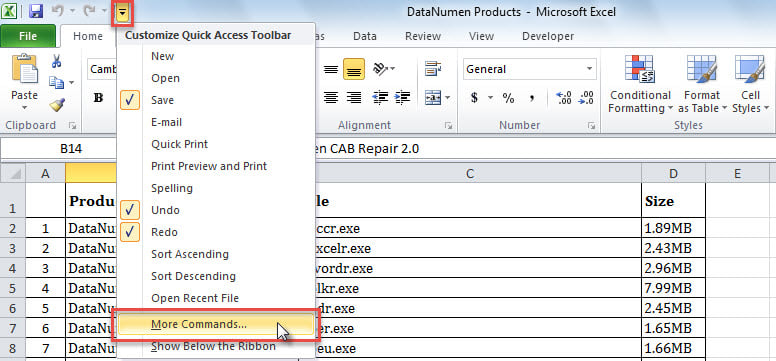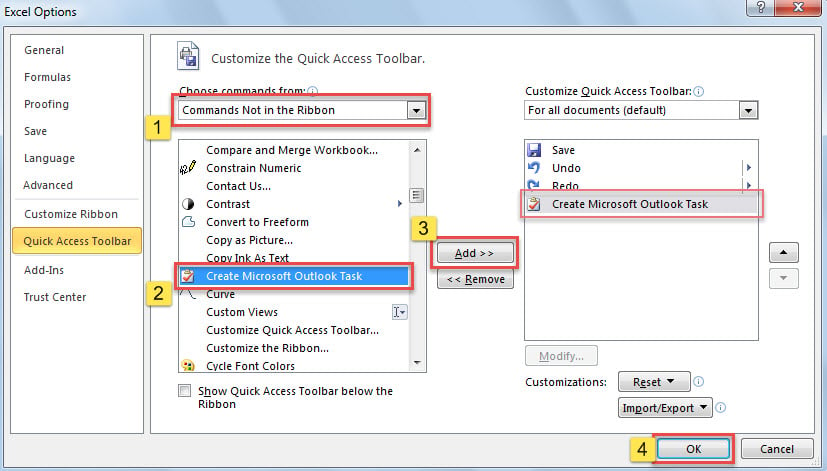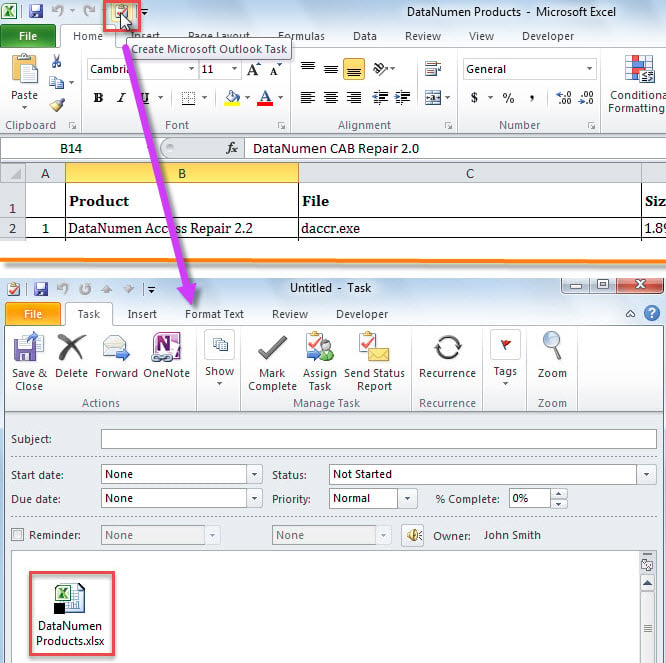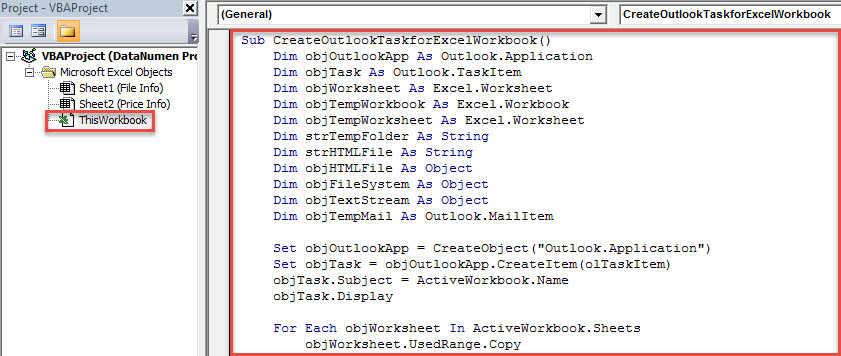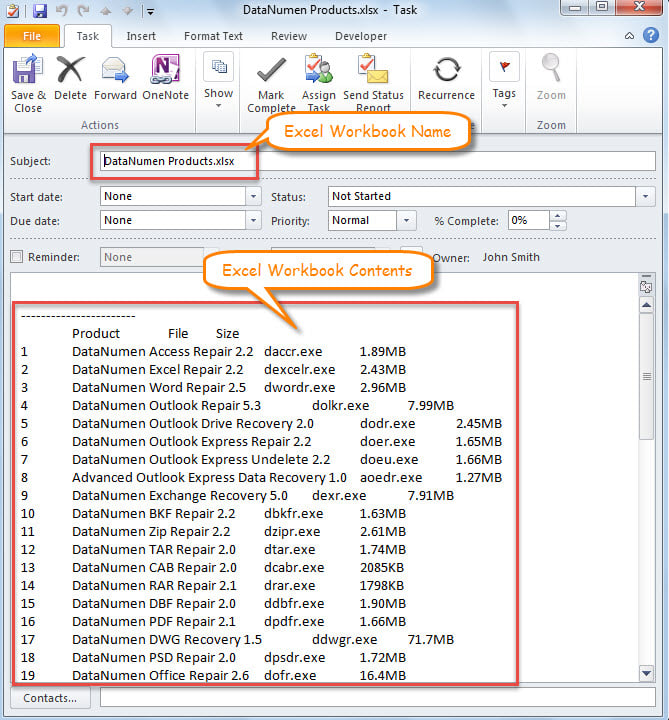Some users are eager to quickly create an Outlook task for an Excel workbook. Thus, in this article, we will introduce 2 simple approaches to get it.
At times, you may want to create an Outlook task from an Excel file for follow up or other reasons. Actually, Microsoft Excel comes with a native feature of “Create Microsoft Outlook Task”, like the Method 1 introduced in the followings. But, it’ll only attach the Excel workbook to an Outlook task. If what you want is to quickly copy all the contents of all worksheets to an Outlook task’s body, you can use the Method 2 instead. Now read on to get the 2 means in detail.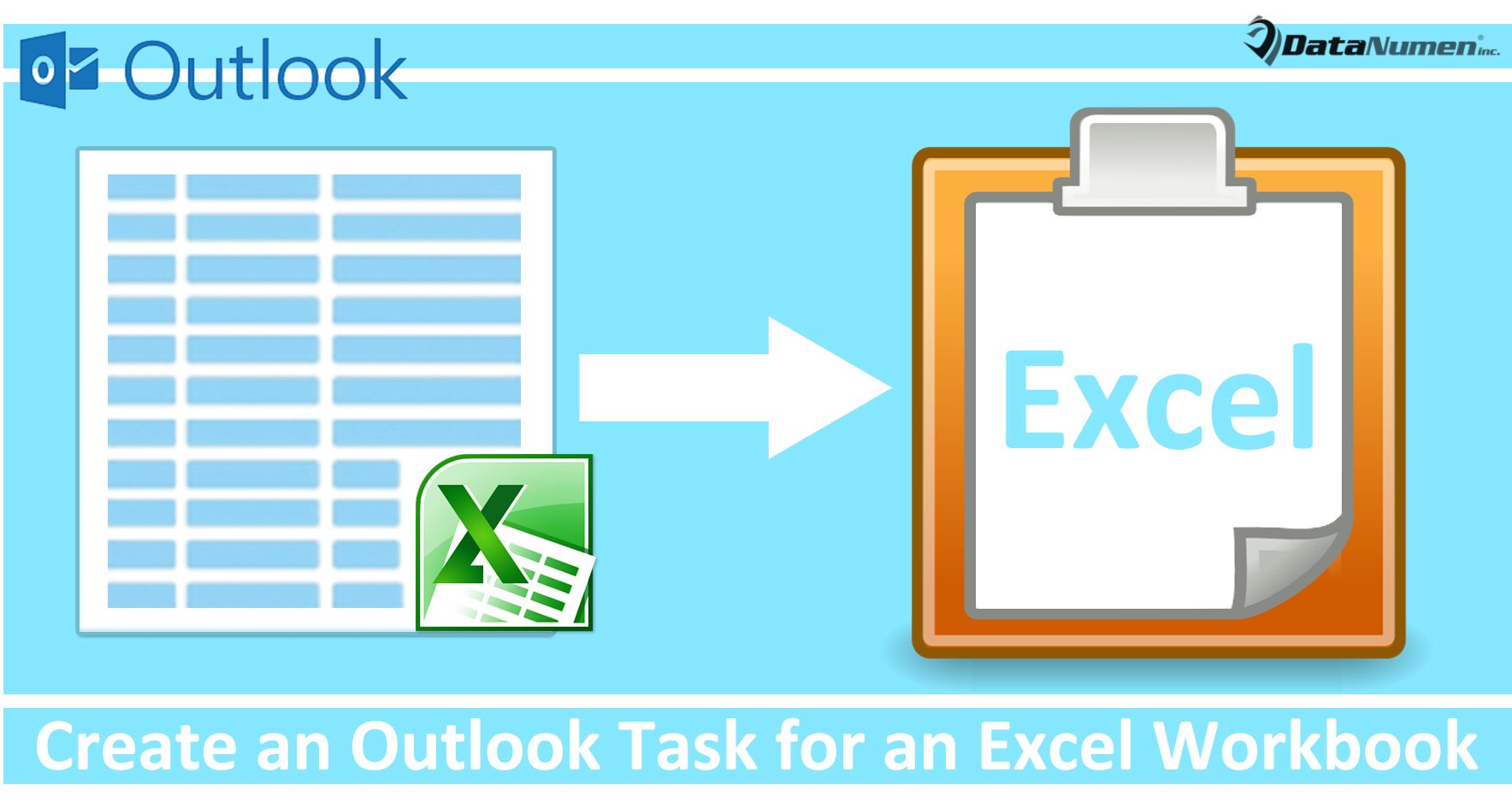
Method 1: Use “Create Microsoft Outlook Task” Command in MS Excel
- In the first place, open the specific Excel workbook.
- Then, click the down arrow button in the Quick Access Toolbar.
- Next, choose “More Commands” from the drop down list.
- Later, in the new “Excel Options” window, on “Quick Access Toolbar” tab, add the “Create Microsoft Outlook Task” command to Quick Access Toolbar.
- First off, select “Commands Not in the Ribbon” from the list of “Choose commands from”.
- Then, locate and pitch on “Create Microsoft Outlook Task” command.
- Afterwards, click “Add >>” button in center.
- Lastly, hit “OK” button.
- Eventually, after returning to the Excel workbook, click the new button in Quick Access Toolbar.
- At once, a new Outlook task will display, which have been attached with the current Excel workbook, like the following screenshot.
Method 2: Copy Excel Workbook to Body of an Outlook Task via VBA Code
- At first, open the source Excel file.
- Then, press “Alt + F11” to trigger Excel VBA editor.
- Subsequently, enable “Microsoft Outlook Object Library”, about which you can refer to “How to Add an Object Library Reference in VBA“.
- After that, put the VBA code below into a module or “ThisWorkbook” project.
Sub CreateOutlookTaskforExcelWorkbook()
Dim objOutlookApp As Outlook.Application
Dim objTask As Outlook.TaskItem
Dim objWorksheet As Excel.Worksheet
Dim objTempWorkbook As Excel.Workbook
Dim objTempWorksheet As Excel.Worksheet
Dim strTempFolder As String
Dim strHTMLFile As String
Dim objHTMLFile As Object
Dim objFileSystem As Object
Dim objTextStream As Object
Dim objTempMail As Outlook.MailItem
Set objOutlookApp = CreateObject("Outlook.Application")
Set objTask = objOutlookApp.CreateItem(oltaskitem)
objTask.Subject = ActiveWorkbook.Name
objTask.Display
For Each objWorksheet In ActiveWorkbook.Sheets
objWorksheet.UsedRange.Copy
Set objTempWorkbook = Excel.Application.Workbooks.Add(1)
Set objTempWorksheet = objTempWorkbook.Sheets(1)
With objTempWorksheet.Cells(1)
.PasteSpecial xlPasteValues
.PasteSpecial xlPasteColumnWidths
.PasteSpecial xlPasteFormats
End With
strTempFolder = CStr(Environ("USERPROFILE")) & "\AppData\Local\Temp"
strHTMLFile = strTempFolder & "\Temp" & Format(Now, "yyyymmddhhmmss") & ".htm"
Set objHTMLFile = objTempWorkbook.PublishObjects.Add(xlSourceRange, strHTMLFile, objTempWorksheet.Name, objTempWorksheet.UsedRange.Address)
objHTMLFile.Publish (True)
Set objTempMail = objOutlookApp.CreateItem(olMailItem)
Set objFileSystem = CreateObject("Scripting.FileSystemObject")
Set objTextStream = objFileSystem.OpenTextFile(strHTMLFile)
objTempMail.HTMLBody = objTextStream.ReadAll
objTempMail.Display
objTask.Body = objTask.Body & vbCr & "-----------------------" & vbCr & objTempMail.Body
objTextStream.Close
objTempWorkbook.Close False
Kill strHTMLFile
objTempMail.Close olDiscard
Next
End Sub
- Eventually, press “F5” key buttons.
- When macro finishes, you will get an Outlook task, which contains the Excel workbook contents in the body, shown as the following screenshot.
Restore Outlook Data from Backups
It is highly recommended to back up your computer data at regular intervals, of course including your Outlook data files. In this way, you needn’t keep concerned about Outlook data loss. Even if your Outlook file gets damaged, you can retrieve data from backups with effortless ease. But, assuming that you haven’t made data backup, in such cases, you have to attempt PST recovery via a proficient fix utility, such as DataNumen Outlook Repair. It can recover PST without breaking a sweat.
Author Introduction:
Shirley Zhang is a data recovery expert in DataNumen, Inc., which is the world leader in data recovery technologies, including repair mdf and outlook repair software products. For more information visit www.datanumen.com
